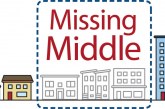

By Audrey Sawyer
WASHINGTON, DC – The Prison Policy Initiative examined over 50 studies and reports that cover multiple decades of research on housing, health, and incarceration and now concludes ending housing insecurity is “foundational to reducing jail and prison populations,” and if this basic need is met there can be a big impact on public health and safety.
According to Brian Nam-Sonenstein, author of the PPI report, while housing is not a “universal remedy” and existing models can be improved upon to be more inclusive, housing itself “has the potential to be one of the most impactful investments to reduce incarceration without investing more in the criminal legal system itself.”
Sonenstein points out individuals who are incarcerated and go through the cycles of homelessness are not all alike, and that while they will require a different range of needs, housing is the one special factor that can stabilize multiple parts of one’s life at once.
He concludes housing provided for as long as possible, with a significant amount of support and choice, provided quickly and with as few “conditions” as possible, will positively influence a person’s relationships, sense of control, and attitudes.
And, with this shift, asserts PPI, individuals also experience a reduction in one getting arrested or incarcerated again, individuals being less reliant on the use of emergency services, and experience of other life crises.
Substance abuse disorder, mental illness and incarceration, are all linked together, claims PPI, noting around 45 percent of adults in the United States who are noted to be diagnosed with serious mental illness concurrently have a substance abuse disorder, and individuals with the dual diagnoses are 12 times more likely to be arrested than those with neither diagnosis.
Many individuals find themselves using drugs to self-medicate or handle mental illness and stress regarding being homeless, said PPI, and according to the HUD, about 21 percent (during a count in 2022 of those who are unhoused) are stated to have a “severe mental illness” with 16 percent involved in “chronic substance abuse.”
Another survey, in Colorado, said PPI, shows that 36 percent of individuals have been arrested for the crime of homelessness, with other research showing that 1 in 8 individuals in Atlanta involved someone experiencing homelessness.
While Housing First programs, said PPI, do not solve all housing related concerns, funding for these programs is important. These programs have been shown to improve quality of life (particularly among those with mental health concerns and substance abuse disorders) and end chronic homelessness. Arrests and incarceration rates are noted to be significantly reduced even when not only designed to criminalize populations.
On the other hand, PPI noted these programs are reliant on existing affordable housing units, access to funding, and might not have specific safety or service needs guaranteed to be readily available.
PPI said another issue is meeting the needs of various groups—women or femmes for example would avoid shelters often out of fear of violence—so it would be difficult for them to fall within the recruitment range. If one has children, many programs lack the services of most Housing First programs.
In 2016, a housing initiative was announced in Denver for individuals who had been experiencing long term homelessness and who had been in frequent communication with police and emergency health services, PPI recounts.
Although the initiative is not currently active, housing subsidies were given with minimal requirements alongside assistance with navigating the legal system and voluntary intensive clinical treatment or case management services.
Research showed that program participants had spent more time in housing— with 77 percent who had stayed in their housing after three years, and with shelters being used 40 percent fewer times than the comparison group.
Another statistic is that DENVER SIB participants spent 27 percent fewer days in jail while being booked into jail 30 percent less often. The participants in addition to this saw 34 percent fewer police interactions with 40 percent fewer arrests than their peers.
A study from Missouri, cites PPI, showed the positive influence that Housing First programs have on shifts in attitude and self-perception, which helps individuals distance themselves from crime.
Solid Start gave housing for one year to about 30 men on parole at a time that they either directly arrived from prison or after a brief stay in the community. Eligibility was defined as someone who had experienced more than 10 years of incarceration, had received little help from the community, either substantial child support or other obligations regarding finances, a maxed-out sentence, a mild to moderate mental health disorder, or a lack of consistent work history.
While the program provided housing subsidies, it also required participation in weekly group therapy sessions alongside case management and coordinated services, explained PPI.
Data starting from 2010 displayed participants in the program felt not only more satisfied with their accommodations compared to those on traditional parole, but they saw themselves as more self-sufficient, seeing Solid Start as a “temporary” support. The participants reported finding life more stable.
Supportive housing is different from Housing First as not every supportive housing model is following the Housing First model, PPI noted.
Some of these supportive housing models make abstinence and treatment mandatory while others like HUD-VASH (Housing and Urban Development Veterans Affairs Supported Housing) will not provide substance abuse treatment as an essential part of the program, instead providing housing subsidies, healthcare referrals, and case management. A veteran who needs such treatment with substance abuse would still find themselves needing those services.
Transitional housing is more about a temporary place of accommodation which will eventually lead to more permanent housing, PPI noted.
A program “A New Way of Life” displayed numbers via their 2022 annual report that 41 women in their program were able to find permanent housing that year, with 99 percent of women serving that were not incarcerated. However, some analysis of “halfway houses” (transitional housing under corrective control) is more ambiguous, and can be linked to higher rearrest rates.
Recovery housing is specifically designed for those with substance abuse disorders, with abstinence and treatment mandatory to a certain extent. What remains problematic, PPI found, is that the definition of “recovery” or definition of abstinence can vary dramatically depending on the program. A recommendation is that Housing First and sober living houses ought to exist parallel to one another.




